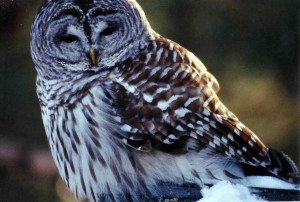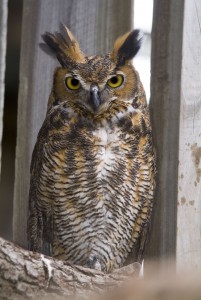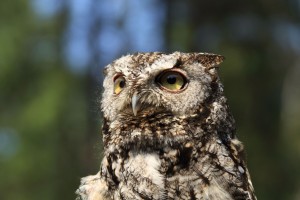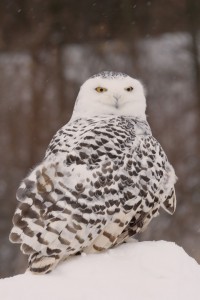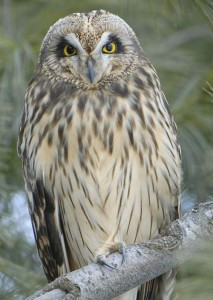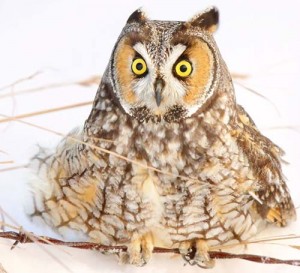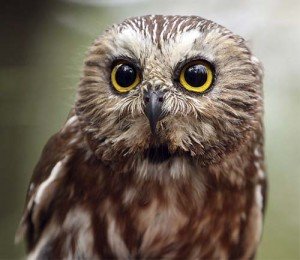Who’s there? Identifying owl calls
Is there an owl in your neighbourhood? Probably. Some can be found almost anywhere with trees, even in the city! Even so, owls are famously mysterious. Many people have never seen one in the wild. Winter is a great time to look because the bare branches help reveal roosts. Some owls such as the Great Horned and Northern Saw-Whet also become more vocal in late winter as breeding season approaches.
Guide to common Canadian owls and their sounds
Barred Owl
|
|
| Habitat: Mature forests across southern Canada. Most active during: Night. Sounds: Its most famous call sounds like a raspy: “Who cooks for you, who cooks for you-all?” |
|
Great Horned Owl
|
|
| Habitat: Diverse treed landscapes across North America, including urban parks. Most active during: Dusk and night. Sounds: The classic owl sound effect used in TV and film, which sounds like: “Who’s awake? Me too.” |
|
Eastern and Western Screech Owl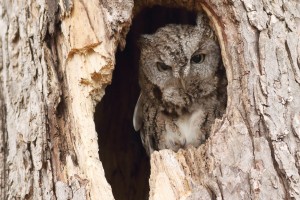 Eastern Screech Owl by Mike Norkum. CC BY ND 2.0 |
|
| Habitat: Both species use a wide range of habitats, including urban parks. The eastern species occurs in Manitoba, Ontario and Quebec; the western screech is found in BC. Most active during: Night. Sounds: While these two species look alike, they sound different. The eastern screech produces a high-pitched whinny whereas the western screech trills a series of nasal hoots that gets faster at the end. |
|
Snowy Owl |
|
| Habitat: Open spaces including shorelines, airfields and farms. Although they breed in the tundra, some winters they migrate to southern Canada and the US. Most active during: Daytime. Sounds: Harsh squawks. |
|
Short-Eared Owl |
|
| Habitat: Open areas like farmland and marshes. This species breeds across Canada, but is usually only found in BC and Ontario during winter. Most active during: Dawn and dusk. Sounds: Raspy yips or quiet hoots. |
|
Long-Eared Owl |
|
| Habitat: Woodlands across southern Canada. Most active during: Night. Sounds: Evenly spaced hoots, like the sound made by blowing across the top of a bottle. |
|
Northern Saw-Whet Owl |
|
| Habitat: Mature forests across southern Canada. Most active during: Night. Sounds: Shrill, monotonous toots. Also high-pitched whines, for which the species might be named; apparently someone thought it sounded like the whetting of a saw. |
|
Finding owls
Here are a few other clues you can look for:
- Other birds making noise and mobbing the owl;
- Pellets (regurgitated clumps of indigestible food) and white poop stains around the bases of tree trunks;
- A habitat that matches your target species’ requirements. Does it need a perch with a view? Open space for hunting? Dense forest for shelter?
Respecting owls
Visiting owls is exciting, but it’s important to be a polite guest. To protect the owls’ well being, please do not:
- Get too close. If an owl is staring at you, elongating its body or flying away, it needs more space.
- Lure owls closer with food. This can encourage dangerous habits.
- Be noisy. Staying quiet will also increase your chances of seeing an owl.
- Play owl recordings. It is stressful for an owl to respond to ‘false alarms,’ thinking another bird is nearby.
- Tell all your friends. Too much human traffic would be disturbing.

